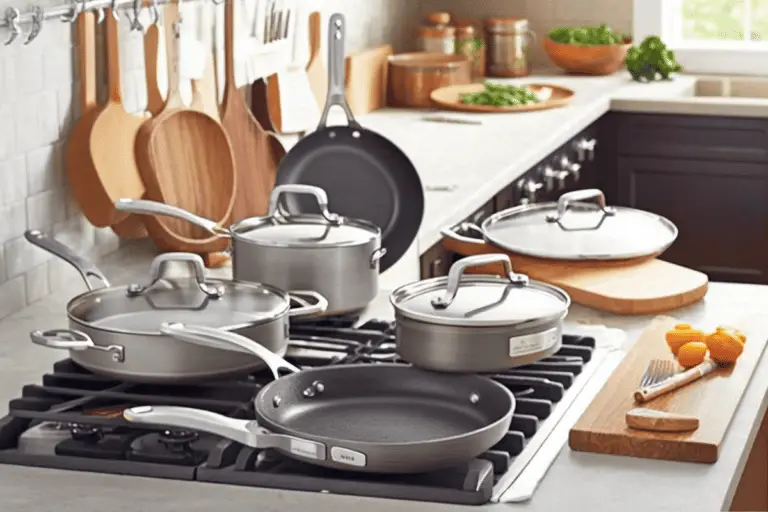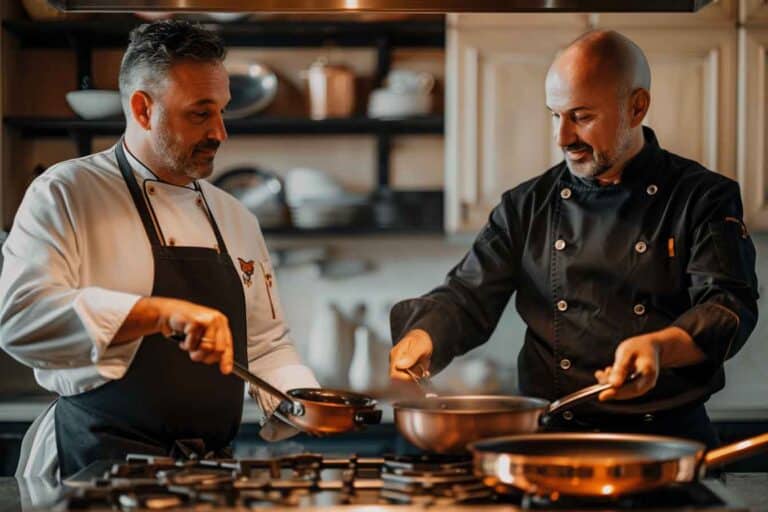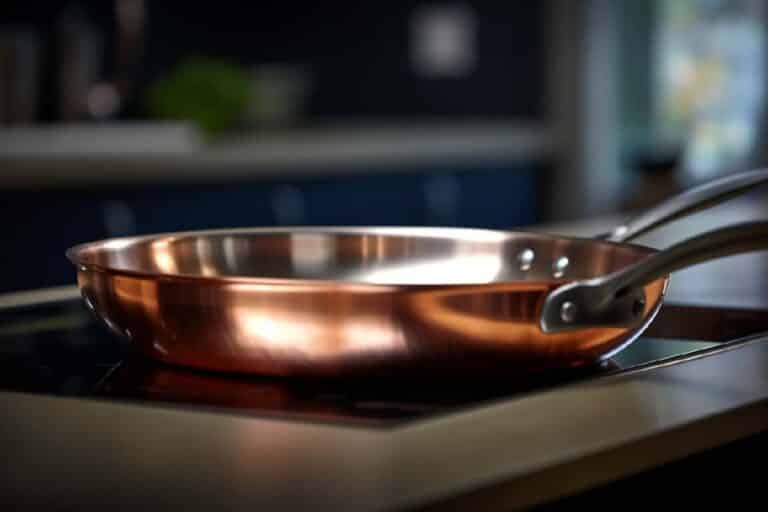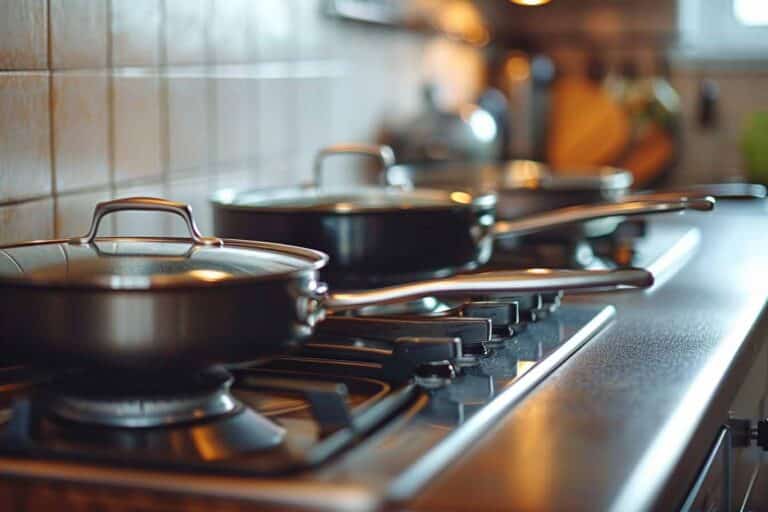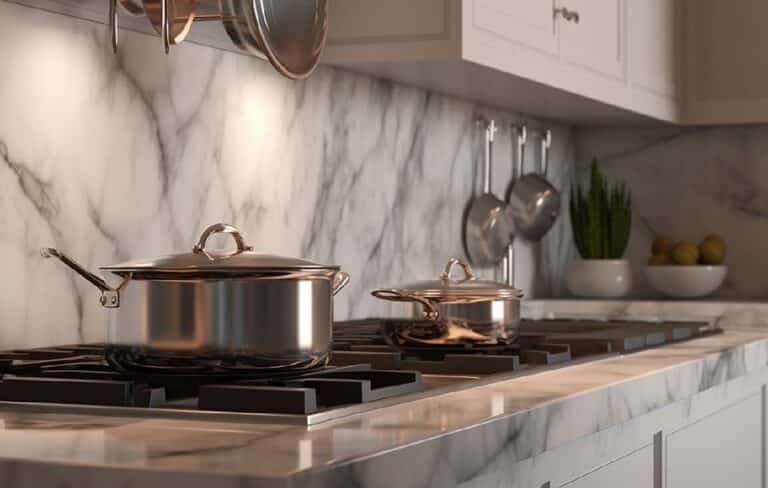Zwilling VS Calphalon: Which Brand Is Better?
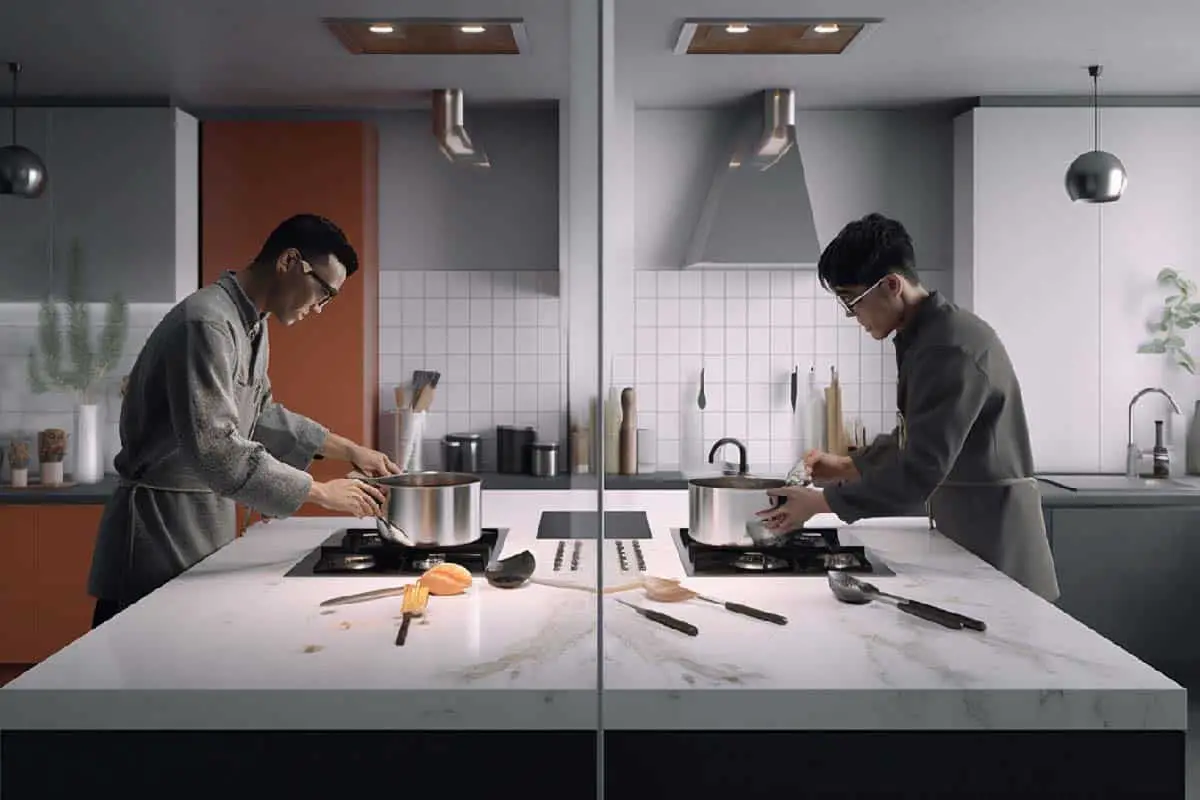
When Godzilla and King Kong clash, who do you root for? Ell, as long as you don’t have to be caught in the middle of that melee, of course, you would just sit back and enjoy to show. No need to pick a side, right?
But, what happens when you pit two very popular cookware brands against each other, each with an amazing reputation for quality? Even worse, what if you’re not doing it just for fun but because you have to make a decision which one to purchase?
Today, we’ll see some serious sparks fly. Will 3 centuries of experience win, or will the “new kid on the block” walk away with the victory? Let’s see that in this Zwilling vs Calphalon showdown.
Zwilling
Zwilling was founded in June 1731 by Peter Henckels as a knife manufacturer. Their first shop opened in Berlin in 1818, and in 1883, their first shop opened in New York City, NY, US of A. In the past century and a half, the company won numerous awards for its knives.
The word “Zwilling” means “twin” in German, explaining the appearance of their logo. In recent years, they have acquired other famous cookware brands like Demeyere and Staub, as well as started their cookware line and expanded into manufacturing hairdressing tools. They also own Miyabi knives and Tweezerman.
Best points
The company entered the cookware game only after acquiring Staub and Demeyere, two well-established brands that were known for making exquisite products. They were one of the best in knife manufacturing for centuries and then they got themselves some of the best people in the cookware business.
Though if brands’ names and reputations mean nothing to you, EU manufacturing standards should. European Union has very strict rules and regulations for every industry, and severe quality control in manufacturing. A lot of brands outsource their manufacturing to China and other countries to avoid them, but not Zwilling. Their cookware is made in Belgium, where has been made since the beginning of the 20th century. And Belgium is very much a part of the EU and has to obey its regulations. In short, we are talking about quality only a mountain of red tape can produce.
Top set – Zwilling Spirit Ceramic Nonstick Cookware Set
This is one of those sets that at first sight look very ordinary but hide so many amazing features. Take the handles, for example, They look plain, but they are designed to stay cool no matter how long your pot or pan spends on the hob. And that curved shape is there for a purpose, and that purpose is to provide a secure grip at all times.
Another amazing feature is the rim-to-rim 3-ply aluminum construction. This allows the pans to heat up quickly yet evenly, and to maintain the optimal temperature while cooking.
But the true MVP of this set is the ceramic nonstick coating. It’s completely PFOA and PTFE-free, and some of the better currently available on the market. And if the food starts to stick, these pieces can be seasoned just like one would season cast iron or carbon steel (it’s a simpler process though: wait to cool, wash with soapy water, apply a few drops of high smoke point oil, and leave them be).
The only issue is the price. Though it’s technically in the same price bracket as the Calphalon set we’ll talk about below, it’s still $100 more expensive. Plus, the Calphalon set comes with one more additional pan.
What’s in the box?
An 8-inch and a 10-inch frying pan, a 1-quart and a 2-quart saucepan, a 3-quart sauté pan, and a 6-quart stockpot.
Pros
- Dishwasher and oven safe up to 400 degrees Fahrenheit, suitable for all hobs.
- Ceramic PFOA and PTFE-free nonstick coating.
- 3mm thick aluminum core that heats up quickly and provides even heat.
Con
- Pricey, when compared to Calphalon.
Best for
Those who love both their chocolate and their cookware made in Belgium.
Calphalon
Calphalon is one of the brands that fall under the umbrella of the international manufacturer, Newell Brands Inc. This makes them related to other household names like Rubbermaid, Sistema, Sharpie, Crock-Pot, Yankie Candle, etc.
It was originally founded in 1963 by Ronald M. Kasperzak under the name Commercial Aluminum Cookware. It used to supply only restaurants and cooking schools with cookware, before becoming available to home cooks as well in the mid-80s. Today, the brand is still beloved by professionals and amateurs alike.
Best points
As mentioned, Calphalon was originally made for use in commercial kitchens. What’s truly awesome about the stuff they market towards regular cooks is that they still treat it like it will have the same amount of use. All elements that would help a pan survive a restaurant environment are there for you to enjoy at home.
The brand is also well known for innovation and smart design. They don’t invent problems just to solve them, but actually think about what average home cooks have to deal with. This led to a proprietary nontoxic nonstick formula, space-saving design, no-boil-over accessories, etc.
Top set – Calphalon Classic™ Oil-Infused Ceramic 11-Piece Cookware Set
Even though these days it’s not very smart to make cookware that is not suitable for induction, this set is still worth checking out. Even more than that. It’s complete in terms of having every pot and pan that you will need for almost every recipe. And each one of those pots and pans features stay-cool handles, draining lids, measurement markers, pouring spouts, heavy-duty hardware, and provide even heating.
The most outstanding feature is the ceramic nonstick coating. It’s completely PFOA and PTFE-free, so you don’t have to worry about nasty chemicals leaching into your food. It can survive metal utensils, and it’s up to 3 times more nonstick than the other coatings the brand makes. You’ll still need to use some oil or butter when cooking, but delicate foods will not stick anymore and it will be a breeze when the washing up time comes around.
What’s in the box?
An 8-inch and a 10-inch frying pan, a 12-inch round griddle pan, a 1.5-quart and a 2.5-quart saucepan, a 3=quart state pan, and a 5-quart stockpot.
Pros
- Dishwasher and oven safe up to 450 degrees Fahrenheit.
- A nontoxic ceramic nonstick coating that releases even the most delicate food with ease.
- Durable complete set with smart design features.
Con
- Not suitable for induction hobs.
Best for
Everyone who fancies themselves as a pro chef.
The showdown: Zwilling vs Calphalon
Product range
Both companies make more than cookware, with Zwilling having a slightly larger range of pots and pans. After all, they also produce the famous Staub line, as well as Ballarini and Demeyere.
But if we were to compare only the Zwilling line to Calphalon’s range, they are more or less evenly matched.
Quality
There’s no complaint when it comes to quality with either of the brands. Customers of both report using their cookware for years with no problems or desire to switch to another brand.
Individually, they have added different stamps to confirm their quality. Calphalon was originally made for professional kitchens, and it’s still used by the pros and in cooking schools. Zwilling, on the other hand, is made in the EU following all of those super strict rules, regulations, and quality control.
Price
Though they can be squeezed into the same price category in most cases, Zwilling runs a bit more expensive than Calphalon when you compare similar collections.
Also, Calphalon has a slightly bigger range of prices, where you can get a full cookware set for only $150, or make it rain and spend about $700 on their premium pieces.
Availability
Calphalon is slightly better here. They are not only available from their online store, but from most major retailers and shops that sell equipment for professional kitchens.
Zwilling is also available online, but if you want to pick it from another store, you will have to go to posh places like Williams Sonoma or Wayfair.
Teflon
Both brands are Teflon-free. They have lines with ceramic nonstick coating as well as ones with other nontoxic coating options.
Ethical production
Zwilling has no known issues and controversies (up to the time of writing this piece). Neither does Calphalon, at least not directly.
However, you should know that Calphalon’s parent company, Newell Brands, got themselves in hot water in recent years. First, it was for closing down factories in Britain and moving them to China, and most recently for safety issues during the first round of lockdown in Australia. Both of those incidents are related to other brands under their umbrella (Sistema and Rubbermaid, respectively), while Calphalon’s reputation still appears sparkly clean.
Which one should you pick?
This depends on how much money you plan to spend at this very moment. Both brands offer great cookware, it’s just that Calphalon costs less.
But, if the price is not an issue, you’ll have to pull a name out of a hat or pick the one that looks better. Whatever happens, you’ll end up with pots and pans you can use and abuse for years to come.
